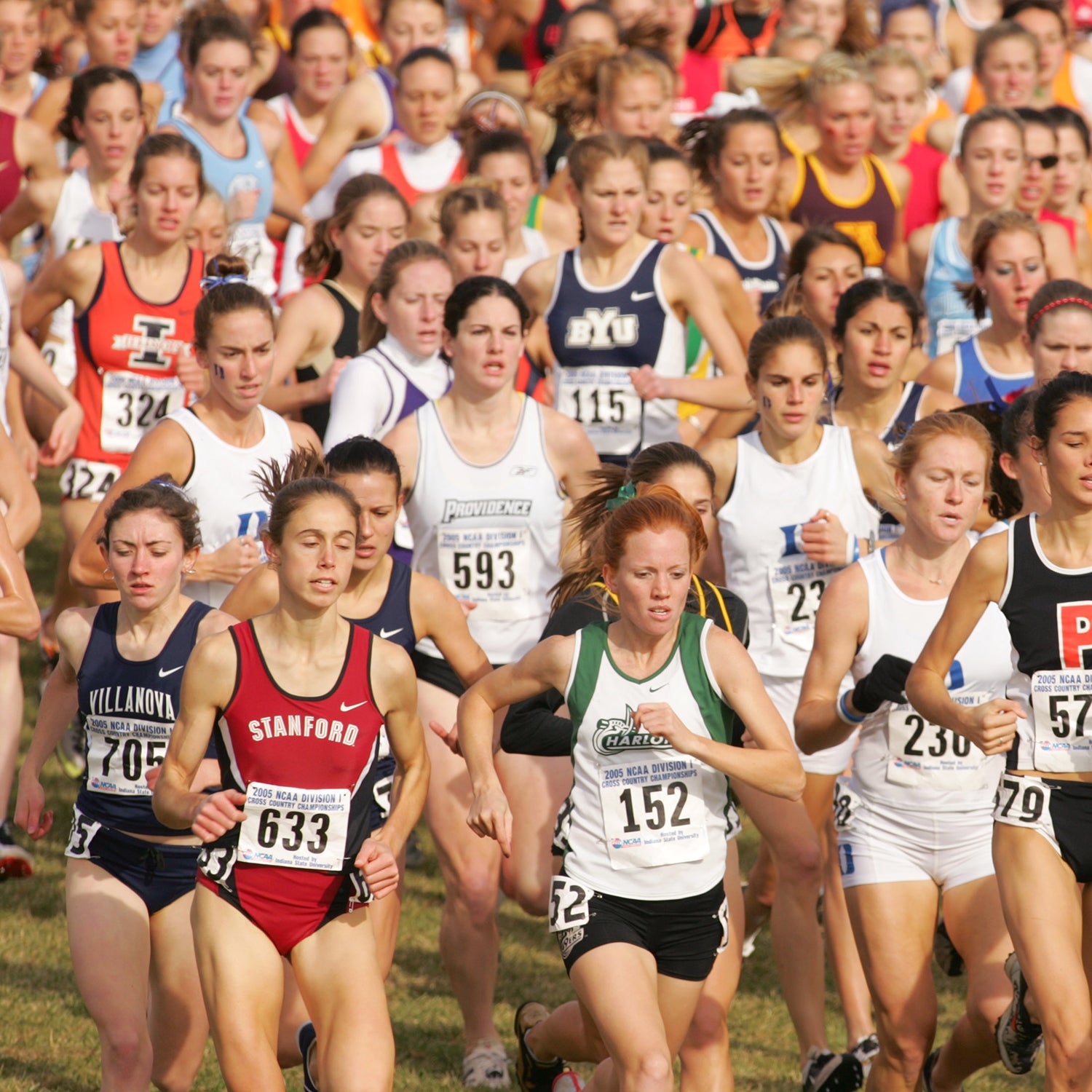There are two words a runner never wants to hear: stress fracture. It often starts as tenderness around the shin or top of the foot, developing when the body can’t withstand or repair the cumulative, repetitive strain on the bone. While these injuries—both stress reactions and stress fractures—can seem like an inevitable rite of passage for runners, they shouldn’t be.
Researchers from Stanford University and UCLA have teamed up to determine if better nutrition affects the rate of bone stress injuries, their severity, and the recovery time. The Stanford-UCLA study is the first prospective one of its kind, following a group of competitive distance runners to understand the root cause of these injuries. Most other studies use a retrospective design, where runners who have a history of injury are compared against those who don’t. This can make it difficult to establish a direct causal relationship between risk factors and injury. By contrast, the Stanford-UCLA study tracks runners over time to determine if and when they become injured and whether changing how they eat can protect them from getting hurt.
Between 2010 and 2013, 38 percent of Stanford’s female runners developed a stress fracture. Historically, a significant number of male and female Stanford runners don’t eat enough to support their training, according to , a professor of orthopedic surgery and sports medicine at Stanford University and head physician for Stanford’s cross-country and track teams. “I’ve spent a lot of time in my career trying to find better ways to diagnose and treat stress fractures,” Fredericson says. “My goal is: How can we prevent them?”
The program is fairly simple. Male and female runners fill out a survey, which includes detailed questions about their food intake, risk factors for eating disorders, previous injuries, and, for women, menstrual history. They undergo a bone density scan and basic blood work to check levels of hormones, vitamin D, and other markers of bone health and bone turnover. Based on this information, athletes are assessed for their . Then, runners work individually with a sports nutritionist to ensure they have a positive energy balance—in other words, that they eat enough calories to match or slightly exceed the energy demanded by their training. Essentially, the goal is for runners to eat a normal diet, Fredericson says.
Depending on each athlete’s baseline nutritional status, they might consult with a dietitian to make simple tweaks, like adding more snacks or including more nutrient-dense food in their meals. Athletes also have access to , an app developed at UCLA that provides nutrition education, recipe suggestions, and tips for how to supplement their daily food intake. Researchers evaluate athletes’ nutritional status three times a year and bone density once a year. They also continuously monitor runners for injuries.
Diet and nutrition can affect bone mass density and bone structure, contributing to how well bones can withstand the repetitive impact of running and repair the micro-damage caused by training.
“We want to look at the highest-risk group to show that this [nutritional intervention] helps,” says , a team physician for UCLA athletics and a co-leader of the study. “We hope that by increasing energy availability, not necessarily cutting back on exercise, athletes are able to eat enough to be slightly positive in their energy intake.”
Diet and nutrition—including calorie, calcium, and vitamin D intake—can affect bone mass density and bone structure, contributing to how well bones can withstand the repetitive impact of running and repair the micro-damage caused by training. When the body doesn’t get enough calories to meet its needs, either because of restricted eating or increased exercise, that also affects hormone levels, Fredericson says. Estrogen levels decrease, which may lead to menstrual cycle disturbances and disrupt the body’s ability to absorb calcium. Thyroid, growth, and stress hormones are also affected—all which can have a negative effect on bone health. It’s no help that the competitive environment of collegiate sports can foster disordered eating behaviors and eating disorders, further complicating these issues.
So far, Fredericson and Nattiv have enrolled approximately 180 male and female distance runners from Stanford and UCLA. The three-year study will conclude in June 2019.
While they haven’t analyzed all the data yet, the researchers have observed positive trends. Athletes have increased bone density by 2 to 5 percent over a one-year period, and the number of bone stress injuries has decreased, including high-risk injuries like the femoral neck, pelvis, and sacrum. “It does look like we’re seeing less injuries clinically, certainly at Stanford,” Fredericson says. They’ve also found that the runners with higher vitamin D levels recovered more quickly from injury. The researchers presented their last year at the American College of Sports Medicine annual meeting.
The study protocol is also changing team culture, shifting the focus from injury to health and performance. “When I was in college, we didn’t have a nutritionist,” says Elizabeth DeBole, head coach of the Stanford women’s cross-country team. “I don’t know if I ever got my iron levels checked, and that was only ten or 15 years ago,” DeBole says interventions like this help her and the coaching staff stay on top of an athlete’s health and get out in front of injuries instead of always playing defense.
“We have a lot of young women who have osteopenia or even osteoporosis at a very young age,” Fredericson says. These are serious conditions that can lead to weak, brittle bones and an increased risk of fractures. “Our goal is to preserve their long-term health.”
More important, DeBole says this program is helping athletes understand that more goes into training than just running, and it’s demystifying the often taboo topic of food and nutrition. “We’re opening a dialogue. I don’t want it to be weird to talk about food,” she says. “It’s just like talking about training. That has to be the mindset.”


